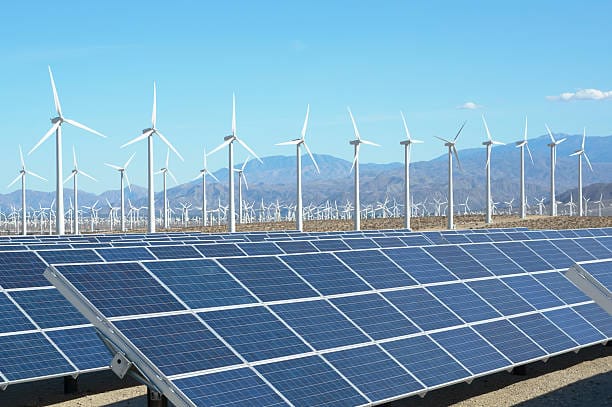
In recent years, conversations around clean energy have moved from idealistic hopes to very real policy and industry shifts. And now, in 2025, it seems the United States is on the brink of a historic energy transformation. For the first time, clean energy sources are projected to account for over 51% of the nation’s utility-scale electricity generation. That means more than half of America’s power could come from sources that don’t emit carbon into the atmosphere. That’s a massive deal and a strong indicator that the country is entering a clean energy majority era.
So, what’s pushing this change? And more importantly, is it sustainable? Let’s break it down.
What Exactly is Happening?
According to the latest data from the U.S. Energy Information Administration (EIA), April 2025 is set to mark a significant milestone: clean energy majority is no longer a concept but a tangible reality. Clean energy generation is expected to surpass fossil fuel sources for the first time in U.S. history. This includes electricity generated from wind, solar, hydropower, and nuclear energy. Solar and wind, in particular, are leading the charge, with solar installations growing at record-breaking speed.
Back in March 2025, fossil fuels dipped below 50% of electricity production for the first time since tracking began. This isn’t just symbolic. It shows a steady move away from coal and natural gas as the dominant forces in our energy grid, paving the way for a clean energy majority future.
Why is This Happening Now?
Several factors are converging to make this possible:
Technological Advancements: Solar panels and wind turbines have become much more efficient and less expensive. In many regions, renewable energy is now the cheapest form of electricity.
Federal and State Policies: Tax incentives, grants, and clean energy mandates are giving companies and homeowners strong reasons to invest in renewables.
Public Awareness and Demand: Climate change isn’t a fringe concern anymore. People want cleaner air and a healthier planet, and they’re pressuring businesses and governments to act.
Private Sector Involvement: Major corporations like Microsoft, Amazon, and Google are pledging to go carbon-neutral or even carbon-negative, pouring billions into clean energy infrastructure.
All of these factors together are helping push the country toward achieving a clean energy majority sooner than expected.
Recent Posts
Challenges on the Horizon
Even with these impressive strides, the journey is far from over. Several challenges could slow or complicate the clean energy majority transition:
Grid Infrastructure: Our current electric grid wasn’t built with renewables in mind. Integrating variable sources like wind and solar requires storage solutions and smart grid technologies that are still in development.
Policy Backlash: Political changes can lead to sudden shifts in energy policy. For instance, the current administration has rolled back some environmental regulations and supported coal plants, creating uncertainty for investors.
Material Supply Chains: Producing solar panels, wind turbines, and batteries requires rare minerals like lithium, cobalt, and nickel. These resources are finite and often come with ethical and environmental concerns of their own.
What This Means for Everyday Americans ?
This shift isn’t just about numbers and policy. It affects all of us. A clean energy majority means:
Lower utility bills in the long run as renewables become more cost-effective
Better air quality and fewer health problems linked to pollution
New job opportunities in construction, installation, maintenance, and R&D
And while transitions can be bumpy, especially for those working in fossil fuel industries, there are increasing efforts to retrain workers and invest in “just transition” strategies that support a smooth path to a clean energy majority.
Earth Day 2025: A Symbol of Progress
Fittingly, this clean energy majority breakthrough comes in the same month as Earth Day 2025, themed “Our Power, Our Planet.” The message is clear: the future of our planet depends on the choices we make about energy today. With the U.S. leading the charge, there’s hope that other countries will follow suit.
Is This Sustainable?
Skeptics argue that hitting the 51% mark in a single month doesn’t guarantee long-term success. And they’re right to an extent. Clean energy generation can fluctuate with weather patterns and seasons. Plus, if policy support weakens, so might momentum.
But the overall trend is unmistakable. More solar farms are being planned. Offshore wind projects are getting funded. Battery storage technology is improving rapidly. And most importantly, public support for a clean energy majority is stronger than ever.
The Bottom Line
The U.S. is at a turning point. While it’s too early to declare total victory over fossil fuels, 2025 is clearly a milestone year. With continued investment, smart policy, and public engagement, a future dominated by clean energy majority isn’t just possible—it’s likely.
So yes, the U.S. is poised to achieve a clean energy majority this year. And if we keep pushing forward, that majority might just become the new norm.